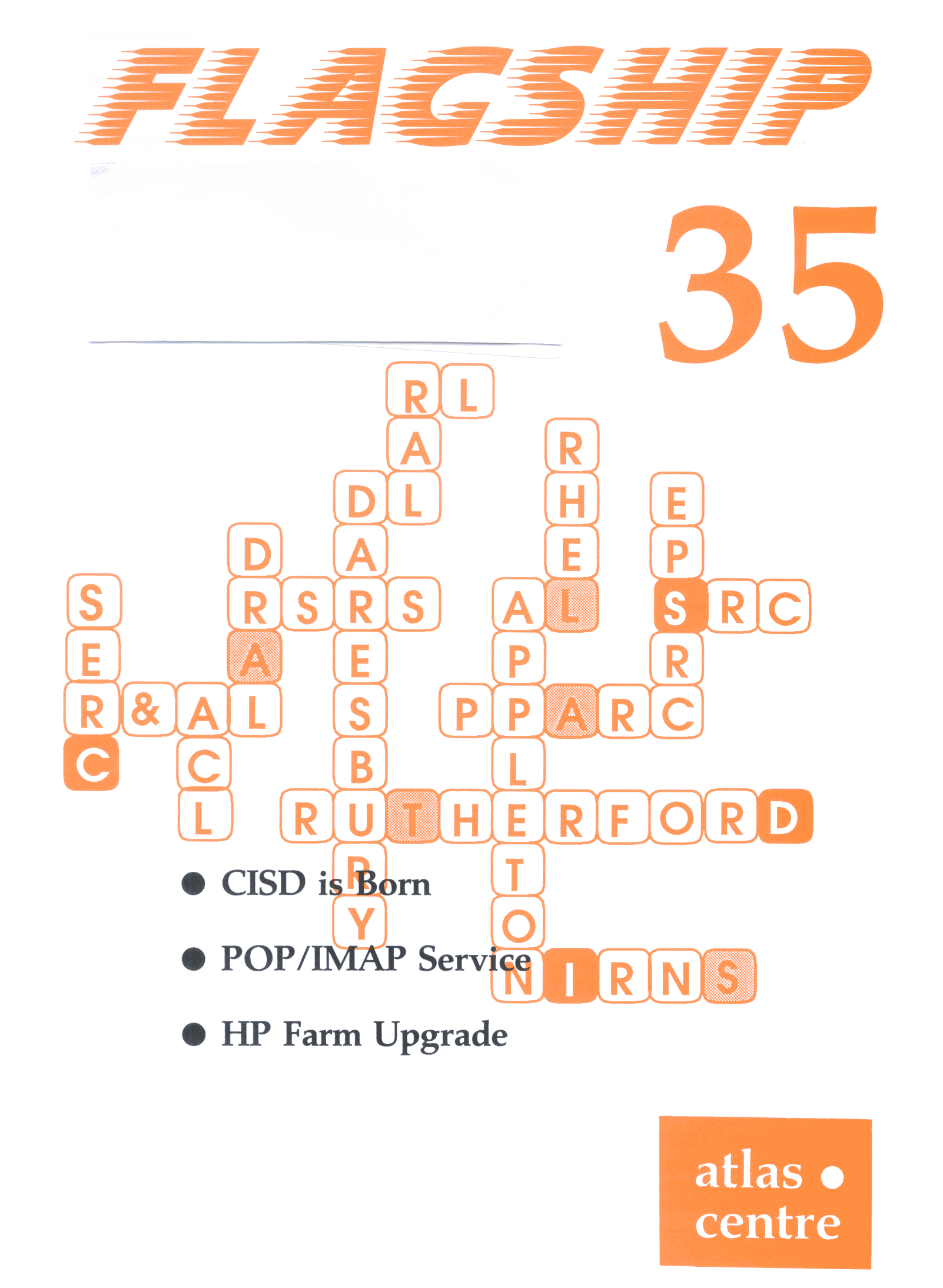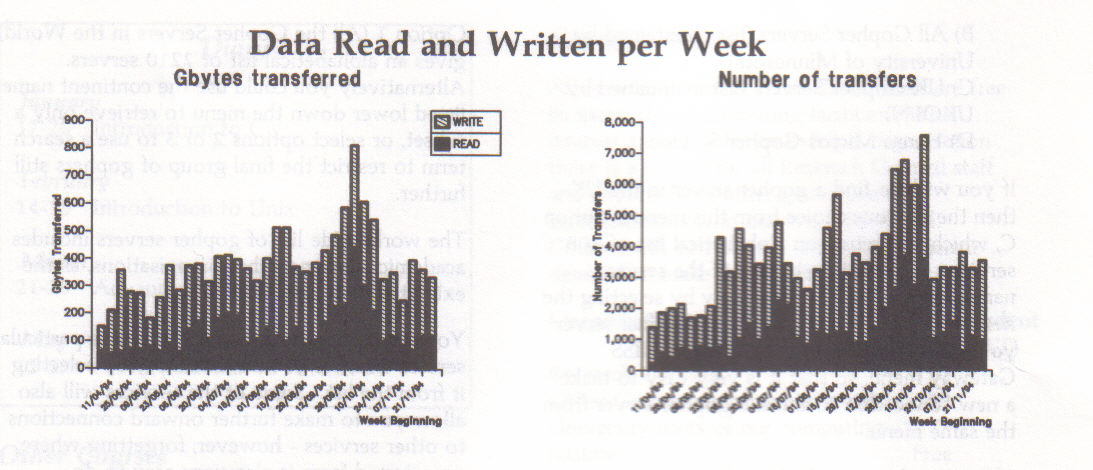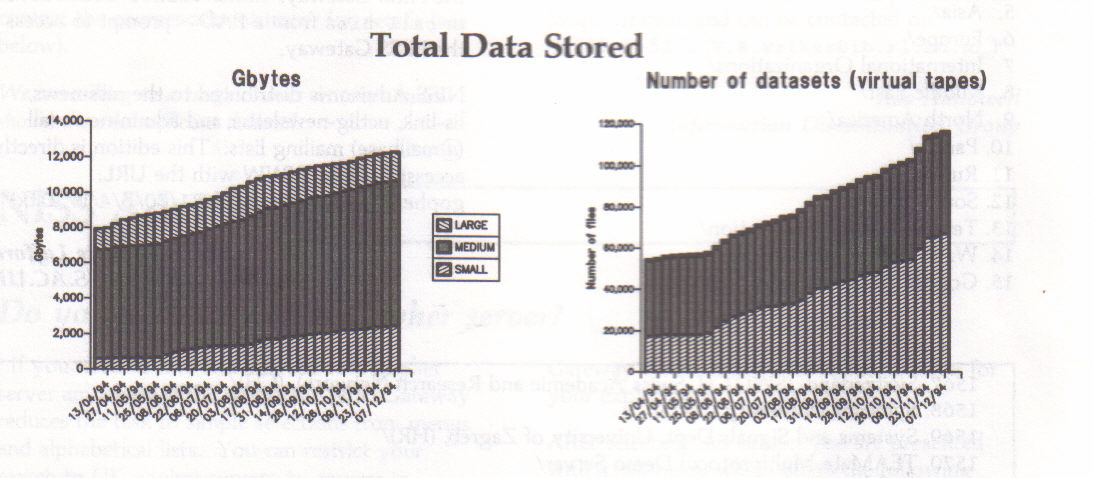


On behalf of everyone at the Atlas Centre I send all readers our best wishes for a happy and prosperous new year.
Last year at this time I noted various technical and organisational changes which were in progress or were then being set in train. If anything, the rate of change has increased since then and so I take the opportunity to summarise here some of the developments as they relate to the services provided from the Atlas Centre.
Starting with developments on the technical side, the Cray Y-MP supercomputing service has probably seen the fewest changes during the year. The Cray has run at essentially full capacity for the whole year and has provided a very stable and reliable service. It continues to support the research programmes of more than a hundred peer reviewed Research Council projects and its capacity is fully committed into 1995. It was good to receive during the year a very favourable report from the National Audit Office on the service and the users' views of it (see FLAGSHIP 30). However, times move on and by world standards a Cray Y-MP is now no longer in the first rank of machines and we note that strategic plans for the next round of provision of national facilities are due to be formulated in the coming year.
Turning to our scalar services, use of the IBM 3090 for scientific and technical computing has now more or less ceased, and the new and more powerful RISC technology scalar computing facilities are in full use and are running well. The remaining activities on the IBM, which are associated with administrative work and with a number of service functions, are now being moved to other facilities and the IBM will close when this has been done.
During 1994 the Particle Physics Committee of PPARC conducted its fourth White Book review which covered the future requirements for central computing for the UK particle physics community. This has recommended a shift in emphasis from sharing a general purpose facility to having tailored services with greater capacity and with optimised use of the data storage facilities, thereby using less staff support effort than in the past. This will require the introduction of various changes that will be announced to the community as they come into effect.
Developments in our data storage facilities have been covered in a number of FLAGSHIP articles during the year. The new IBM 3494 automated store has come into service and its capacity will be enhanced in 1995. The VTP service that enables data in the store to be accessed from networked computers (local or remote) is in production use, and sustained data rates of hundreds of Kbytes/s have been measured end to end for magnetic tape data transferred across the national network - the limit on performance usually being imposed by a local network somewhere in the overall communications chain, rather than the national one.
Last year I mentioned early applications of SuperJANET in the visualisation of supercomputing output. This year there has also been great interest in pilot applications of SuperJanet for video conferencing, and initial experience of using these techniques has been very good. There is also pressing interest from user communities in being able to have video conferencing over the public ISDN network, which can reach places not available on SuperJanet, and for Mbone video conferencing over the Internet. Video applications, whether for meetings or for broadcasts are expected to be a significant growth activity in the next year or two.
During the year the Joint Network Team was transformed into a company, UKERNA, which now occupies part of the Atlas Centre buildings. In the former incarnation most of the JNT staff were employees of RAL, and most of them are now employees of UKERNA, and we wish them well in their new endeavours.
As regards organisational changes, the restructuring of the Research Councils clearly has widespread implications, one of which is that new arrangements for managing the national high performance computing programme came into effect in the autumn. Another implication for the Atlas Centre is that its funding is no longer channelled through a single Research Council and now becomes the subject of Service Level Agreements with a number of them.
A second organisational change is that as from April 1994 the Daresbury and Rutherford Appleton Laboratories were merged into a single organisation, DRAL. In a further development it was announced in the autumn of 1994 that as from April 1995 DRAL will remain in public ownership but as an independent body under the Office of Public Service and Science rather than being owned by the Engineering and Physical Sciences Research Council as at present. The Laboratory's remit, which is consonant with the wealth creating objectives of the 1993 White Paper on science, will be to provide high quality leading edge facilities and expertise in support of research programmes funded by users including the Research Councils, Government Departments and UK industry.
Finally on organisational topics and in the context of the above changes, on November 14 the Central Computing and Informatics Departments at RAL were merged to form a new Computing and Information Systems Department.
Creating the new department has brought together a wide range of IT and computational skills in R&D and service-related disciplines into a single, comprehensive organisation that will increase the breadth and scope of work with customers and partners as the role and status of the Laboratory being to change during the next year.
The mission statement for CISD is To provide high quality computational facilities, specialist services and high value IT solutions for customers inside and outside of DRAL.
FLAGSHIP will continue to be published according to the regular schedule, targeting its normal readership. The editorial team also remains largely unchanged. The new, larger department will offer more local scope for increasing the breadth of articles and editorial comment. However we will still encourage you, our readers, to provide us with your articles on relevant topics and work. Whenever possible articles produced by our readers will take publication priority over locally produced articles.
The farm of Hewlett Packard machines that Computing and Information Systems Department (CISD) runs for the Particle Physics community is being upgraded. A review of central provisions for Particle Physics computing (known as "White Book 4") recommended a three-fold increase in power. The existing six HP 7000/735 machines are to be supplemented by another twenty model 712s. While these new machines are less powerful than the existing ones (84 Speclnt92 versus 109), the number of machines being purchased will increase the farm to more than three times its current power.
The new machines will have the same memory (48MB) as the existing ones. Each machine will be connected with its own Ethernet to switching equipment giving access to FDDI. This enables any two machines to communicate at Ethernet speeds (10Mb/s) independently of the traffic between the other machines. The aggregate traffic between all the new HP machines and the outside world will run at FDDI speeds (l00Mb/s).
The original farm was modelled on the Central Simulation Facility (CSF) at CERN. CSF runs only Monte Carlo simulation batch work which is typically CPU-intensive and low I/O. Following the upgrade the use of the farm will be widened to include general analysis and higher I/O jobs. This latter use benefits from the proximity of the Atlas Data Store which offers on-line tape access to 2TB of data. HP machines are widely used at CERN and in the worldwide Particle Physics community and it is this popularity that has required th:s upgrade.
Potential users from the Particle Physics community or those seeking more information should contact j.c.gordon@rl.ac.uk.

The graphs above show the weekly traffic of data read out of and written into the Atlas Data Store. This is activity from network attached systems (i.e. all local and remote systems except VM)
In the graphs below:
